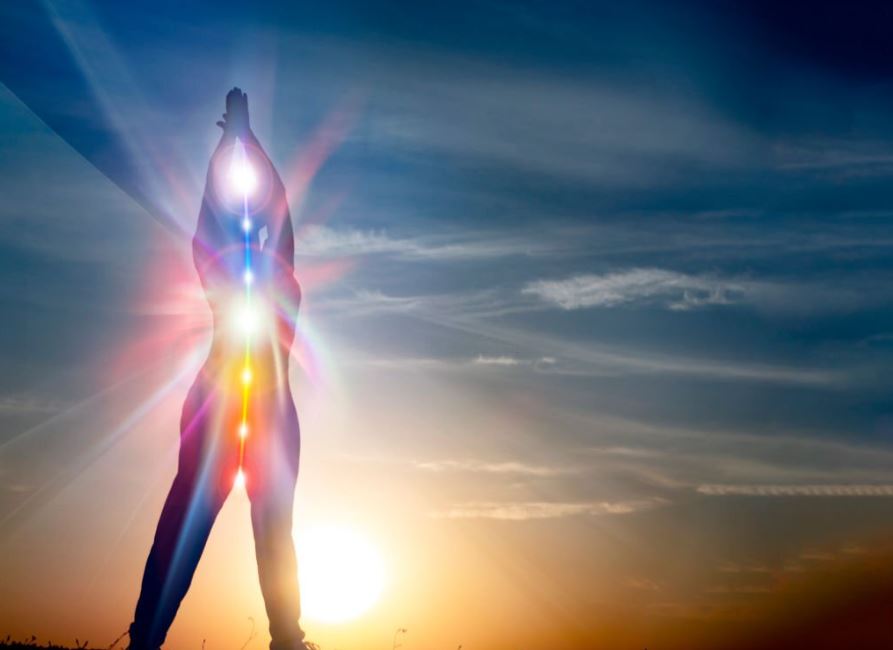Stress and anxiety have become prevalent issues in today’s fast-paced world, affecting individuals’ overall well-being. While there are various methods to manage stress and anxiety, Kundalini Yoga offers a holistic approach to restore balance and promote mental and physical harmony. This article explores the transformative power of Kundalini Yoga Kriya for Stress and Anxiety specifically designed to relax your mind. By incorporating these kriyas into your daily routine, you can experience a profound sense of calm, clarity, and inner peace.
What is Kundalini Yoga?
Kundalini Yoga is an ancient practice that combines physical postures (asanas), breathing techniques (pranayama), meditation, and mantra chanting to awaken and activate the dormant spiritual energy within the body, known as Kundalini. Unlike other forms of yoga, Kundalini Yoga focuses on the energetic aspect of the practice, aiming to expand consciousness and unlock the true potential of the individual.
Understanding Stress and Anxiety
Stress and anxiety are natural responses to challenging situations or perceived threats. However, when these feelings become chronic or overwhelming, they can negatively impact mental and physical health. Persistent stress and anxiety can lead to various symptoms such as restlessness, irritability, difficulty concentrating, muscle tension, and even affect the immune system. It is essential to address these issues to maintain overall well-being.
The Benefits of Kundalini Yoga for Stress and Anxiety
Kundalini Yoga offers numerous benefits for managing stress and anxiety effectively. It works on multiple levels, targeting the physical, mental, and energetic aspects of the individual. Some of the benefits include:
- Promoting Relaxation and Stress Relief: Kundalini Yoga activates the parasympathetic nervous system, inducing a state of deep relaxation and reducing stress levels.
- Releasing Emotional Blockages: Kundalini Yoga kriyas help release stored emotional tension and promote emotional balance.
- Improving Mental Clarity: The practice of Kundalini Yoga enhances focus, concentration, and mental clarity, reducing anxiety and promoting a sense of calm.
- Balancing Hormones: Specific Kundalini Yoga techniques help balance hormonal levels, reducing the impact of stress on the body.
- Boosting Energy and Vitality: Kundalini Yoga activates and channels the dormant energy within, increasing overall vitality and resilience to stress.
Five Kundalini Yoga Kriyas for Stress and Anxiety
1. Breath of Fire Kundalini Yoga Kriya
Explanation of Breath of Fire
The Breath of Fire is a powerful breathing technique in Kundalini Yoga that involves rapid and rhythmic breathing through the nose. It generates heat within the body, increases oxygen supply, and stimulates the nervous system.
Steps to Practice Breath of Fire
- Find a comfortable seated position, keeping the spine straight.
- Relax the shoulders and close your eyes.
- Begin breathing rapidly and rhythmically through the nose, with equal emphasis on both the inhale and exhale.
- Allow the breath to flow naturally without any force or strain.
- Start with a duration of 1-3 minutes and gradually increase it as you become more comfortable.
Benefits of Breath of Fire for Stress and Anxiety
- Reduces anxiety and promotes mental clarity.
- Energizes the body and uplifts the spirit.
- Cleanses and purifies the respiratory system.
- Increases oxygenation, improving overall well-being.
2. Cat-Cow Pose with Breath of Fire Kundalini Yoga Kriya
Explanation of Cat-Cow Pose
The Cat-Cow Pose is a gentle spinal movement that helps release tension in the back, shoulders, and neck. It promotes flexibility and improves the flow of energy throughout the body.
Incorporating Breath of Fire in Cat-Cow Pose
- Start in a tabletop position with your hands and knees on the floor.
- Inhale deeply, arching your back and lifting your gaze towards the ceiling (Cow Pose).
- Exhale fully, rounding your spine and tucking your chin towards your chest (Cat Pose).
- Coordinate the breath with the movement, inhaling in Cow Pose and exhaling in Cat Pose.
- Practice this sequence for 5-10 rounds, incorporating Breath of Fire during each posture.
Benefits of Cat-Cow Pose with Breath of Fire for Stress and Anxiety
- Relieves tension in the back and promotes spinal flexibility.
- Activates the diaphragm and enhances breath control.
- Calms the mind and reduces anxiety.
- Stimulates the flow of energy along the spine.
Read More: Kunjal Kriya Benefits for Skin
3. Standing Forward Bend with Breath of Fire Kundalini Yoga Kriya
Explanation of Standing Forward Bend
The Standing Forward Bend is a gentle inversion that allows the body to relax, release tension, and promote a sense of surrender. It stretches the hamstrings, back, and shoulders.
Adding Breath of Fire to Standing Forward Bend
- Stand with your feet hip-width apart and slowly fold forward from the hips.
- Allow your upper body to hang loose, bringing your hands towards the floor or holding onto opposite elbows.
- Maintain a slight bend in the knees to protect the lower back.
- Practice Breath of Fire in this position, allowing the breath to deepen the stretch and release tension.
Benefits of Standing Forward Bend with Breath of Fire for Stress and Anxiety
- Relaxes the body and mind, reducing stress and anxiety.
- Stretches the hamstrings and releases tension in the back.
- Stimulates digestion and improves blood circulation.
- Promotes a sense of surrender and letting go.
4. Meditation with Mantra Kundalini Yoga Kriya
Understanding Mantra Meditation
Mantra meditation involves the repetition of sacred sounds, words, or phrases to focus the mind and connect with higher consciousness. In Kundalini Yoga, specific mantras are used to induce specific effects on the mind, body, and spirit.
Steps to Practice Mantra Meditation
- Find a comfortable seated position and close your eyes.
- Choose a mantra that resonates with you (e.g., “Sat Nam,” meaning “Truth is my identity”).
- Begin repeating the mantra silently or chanting it out loud.
- Focus your attention on the sound and vibration of the mantra.
- Continue for a few minutes or longer, allowing the mantra to guide your meditation.
Benefits of Mantra Meditation for Stress and Anxiety
- Calms the mind and reduces mental chatter.
- Enhances focus and concentration.
- Creates a sense of inner peace and harmony.
- Connects you with higher states of consciousness.
5. Relaxation Pose with Deep Breathing Kundalini Yoga Kriya
Explanation of Relaxation Pose
Relaxation Pose, also known as Savasana or Corpse Pose, is a position of deep rest and rejuvenation. It allows the body and mind to relax completely, releasing tension and promoting a state of inner calm.
Deep Breathing Techniques in Relaxation Pose
- Lie flat on your back with your arms resting alongside your body and palms facing up.
- Close your eyes and allow your body to sink into the floor.
- Take slow, deep breaths, inhaling deeply through the nose and exhaling fully through the mouth.
- Focus on the sensation of your breath entering and leaving your body, allowing each breath to deepen the state of relaxation.
Benefits of Relaxation Pose with Deep Breathing for Stress and Anxiety
- Relaxes the body and mind, promoting deep rest.
- Reduces muscle tension and releases accumulated stress.
- Restores energy and rejuvenates the nervous system.
- Enhances self-awareness and mindfulness.
Incorporating Kundalini Yoga into Your Daily Routine
To fully experience the benefits of Kundalini Yoga for stress and anxiety, it is essential to establish a consistent practice. Here are some tips for incorporating Kundalini Yoga into your daily routine:
- Set aside a dedicated time and space for your practice.
- Start with shorter practice sessions and gradually increase the duration as you progress.
- Choose kriyas and techniques that resonate with your specific needs.
- Seek guidance from a qualified Kundalini Yoga teacher or use reputable online resources.
- Stay committed and approach your practice with an open mind and heart.
Precautions and Considerations
While Kundalini Yoga can be highly beneficial, it’s essential to consider the following precautions:
- Consult with a healthcare professional if you have any pre-existing medical conditions or injuries.
- Practice within your limits and avoid pushing yourself beyond your comfort zone.
- Listen to your body and modify or skip poses if they cause pain or discomfort.
- If you’re pregnant or have any specific concerns, consult with a prenatal yoga specialist or your healthcare provider before practicing Kundalini Yoga.
Incorporating Kundalini Yoga kriyas into your daily routine can be a transformative way to manage stress and anxiety. By practicing Breath of Fire, Cat-Cow Pose with Breath of Fire, Standing Forward Bend with Breath of Fire, Meditation with Mantra, and Relaxation Pose with Deep Breathing, you can experience a profound sense of calm, balance, and inner peace. Remember to approach your practice with dedication, patience, and self-compassion, and enjoy the journey of reconnecting with your true self.
Read More: Agnisar Kriya Benefits, Steps and precautions
FAQs
FAQ 1: Can anyone practice Kundalini Yoga Kriyas for stress and anxiety?
Yes, Kundalini Yoga Kriyas can be practiced by anyone, regardless of age or fitness level. However, if you have any pre-existing medical conditions, it is advisable to consult with a healthcare professional before starting any new exercise regimen.
FAQ 2: How long should I practice these Kundalini Yoga Kriyas?
The duration of your practice can vary depending on your schedule and availability. Start with shorter sessions, such as 10-15 minutes, and gradually increase the duration as you become more comfortable. Consistency is key, so aim for regular practice rather than extended sessions.
FAQ 3: Can Kundalini Yoga completely cure stress and anxiety?
While Kundalini Yoga can be highly effective in managing stress and anxiety, it is not a substitute for professional medical advice or treatment. It is best used as a complementary practice alongside other stress-management techniques and therapies.
FAQ 4: Are there any specific breathing techniques for beginners?
Yes, there are several beginner-friendly breathing techniques in Kundalini Yoga, such as Long Deep Breathing and Alternate Nostril Breathing. These techniques can help calm the mind, regulate the breath, and promote relaxation.
FAQ 5: Can Kundalini Yoga be practiced during pregnancy?
Kundalini Yoga can be adapted for pregnant women; however, it is important to consult with a prenatal yoga specialist or your healthcare provider for guidance on safe modifications and suitable practices for each trimester.



